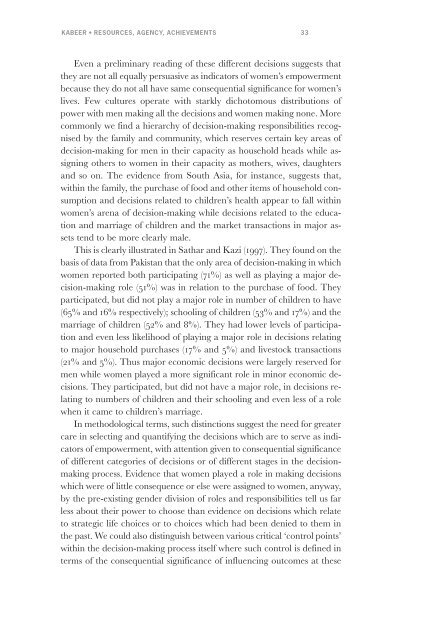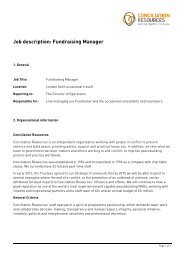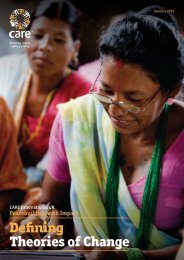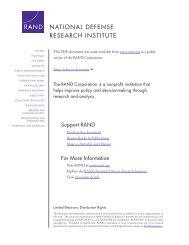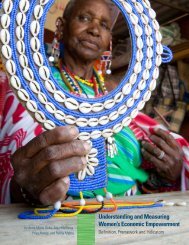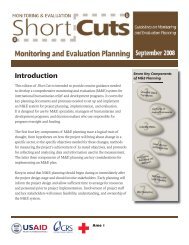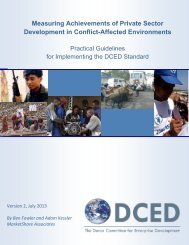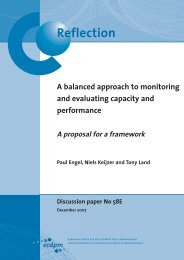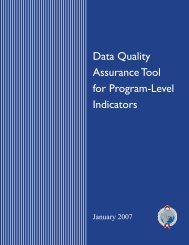Discussing Women's Empowerment - Sida
Discussing Women's Empowerment - Sida
Discussing Women's Empowerment - Sida
You also want an ePaper? Increase the reach of your titles
YUMPU automatically turns print PDFs into web optimized ePapers that Google loves.
KABEER • RESOURCES, AGENCY, ACHIEVEMENTS 33<br />
Even a preliminary reading of these different decisions suggests that<br />
they are not all equally persuasive as indicators of women’s empowerment<br />
because they do not all have same consequential significance for women’s<br />
lives. Few cultures operate with starkly dichotomous distributions of<br />
power with men making all the decisions and women making none. More<br />
commonly we find a hierarchy of decision-making responsibilities recognised<br />
by the family and community, which reserves certain key areas of<br />
decision-making for men in their capacity as household heads while assigning<br />
others to women in their capacity as mothers, wives, daughters<br />
and so on. The evidence from South Asia, for instance, suggests that,<br />
within the family, the purchase of food and other items of household consumption<br />
and decisions related to children’s health appear to fall within<br />
women’s arena of decision-making while decisions related to the education<br />
and marriage of children and the market transactions in major assets<br />
tend to be more clearly male.<br />
This is clearly illustrated in Sathar and Kazi (1997). They found on the<br />
basis of data from Pakistan that the only area of decision-making in which<br />
women reported both participating (71%) as well as playing a major decision-making<br />
role (51%) was in relation to the purchase of food. They<br />
participated, but did not play a major role in number of children to have<br />
(65% and 16% respectively); schooling of children (53% and 17%) and the<br />
marriage of children (52% and 8%). They had lower levels of participation<br />
and even less likelihood of playing a major role in decisions relating<br />
to major household purchases (17% and 5%) and livestock transactions<br />
(21% and 5%). Thus major economic decisions were largely reserved for<br />
men while women played a more significant role in minor economic decisions.<br />
They participated, but did not have a major role, in decisions relating<br />
to numbers of children and their schooling and even less of a role<br />
when it came to children’s marriage.<br />
In methodological terms, such distinctions suggest the need for greater<br />
care in selecting and quantifying the decisions which are to serve as indicators<br />
of empowerment, with attention given to consequential significance<br />
of different categories of decisions or of different stages in the decisionmaking<br />
process. Evidence that women played a role in making decisions<br />
which were of little consequence or else were assigned to women, anyway,<br />
by the pre-existing gender division of roles and responsibilities tell us far<br />
less about their power to choose than evidence on decisions which relate<br />
to strategic life choices or to choices which had been denied to them in<br />
the past. We could also distinguish between various critical ‘control points’<br />
within the decision-making process itself where such control is defined in<br />
terms of the consequential significance of influencing outcomes at these


